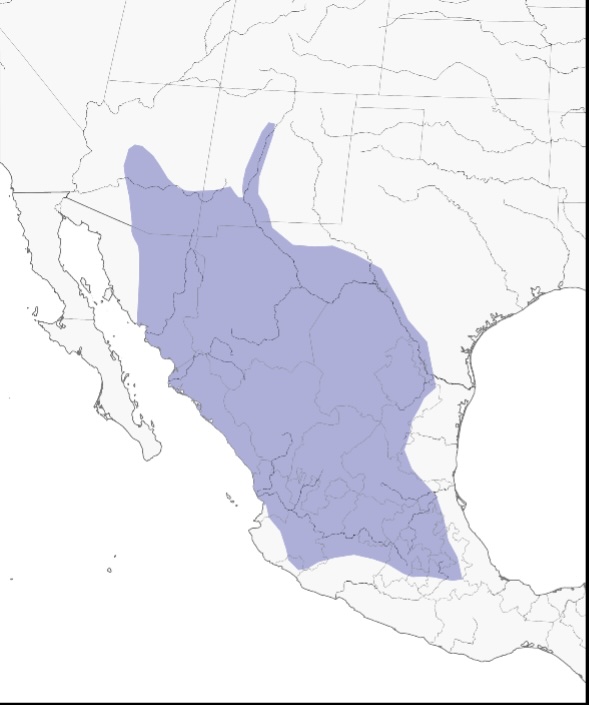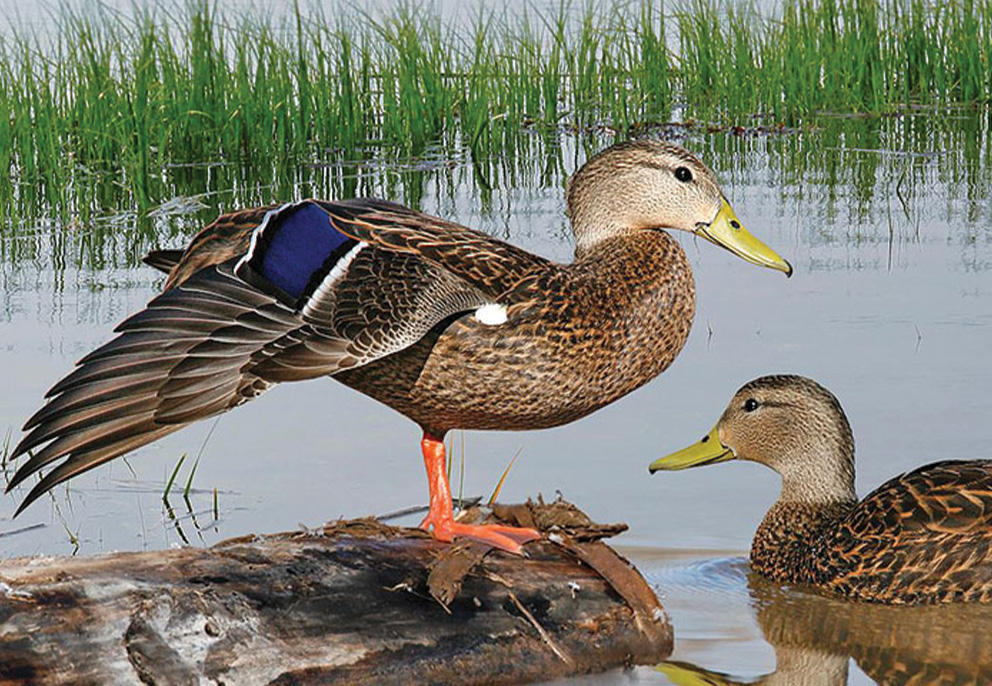Overview
The Mexican Duck is a large dabbling duck that is among the least studied in North America. The range of the Mexican Duck is almost entirely in the Central Highlands of Mexico, although small numbers extend northward into southern Arizona, New Mexico, and southwestern Texas. The species appears to be expanding its range in northern Mexico westward into Sonora, and also into central Arizona and Texas eastward into the Rio Grande Valley.
They have darkish brown body plumage, with a lighter neck and head. The head is tan to buffy, with faint dark streaks, a deep brown crown, and a dark brown eye stripe.In flight they have silvery-white wing linings that contrast with the dark upper wing feathers. The speculum is blue to bluish green with a trailing white edge, and no leading white edge.
Description
Key Identification Features
- Male and female Mexican Ducks are similar in appearance and resemble female Mallards. Mexican Ducks are slightly darker than Mallards, but not as dark as American Black Ducks.
- Mexican Ducks have darkish-brown body plumage, with a lighter neck and head. The head is tan to buffy, with faint dark streaks, a deep brown crown, and a dark brown eye stripe.
- The sexes can be separated by bill color, with males having an olive-green bill, and females a dusky-orange bill, at times with olive undertones and variable dark markings. The legs and feet of both sexes are orange to dull orange.
Male/Female Average Length and Weight
- Weight: Males 1.9–2.7 lbs. ; Females 1.4–2.8 lbs.
- Wingspan: Males 10.1–11.7 in.; Females 9.8–10.9 in.
Male Identification
- Alternate (Breeding) Plumage: Males are deep brown, with the breast showing reddish brown. The head and neck are lighter brown to tan, with fine dark streaks, and a deep brown eye stripe. The bill is olive, and the feet and legs are orange. In flight, the brown upper wing contrasts with silvery underwing, and they have an iridescent blue to bluish-green speculum with a trailing white.
- Basic Plumage: Overall deep brown, sexes somewhat similar.
Female Identification
- Alternate and Basic Plumage: Similar to males but the bill is dull orange to orange with olive undertones, and variable black markings. The legs and feet are dull orange.
In-Flight Identification
- In flight they have silvery-white wing linings that contrast with the dark upper wing feathers. The speculum is blue to bluish-green with a trailing white edge, and no leading white edge.
Vocalizations
- Male Calls: a very reedy “rink.”
- Female Calls: make a loud “quack” or a short series of decrescendo “quacks.”
Similar Species
- Mexican Ducks have superficial resemblance to Mottled Ducks and female Mallards. Geographic location is useful for different species but not 100% reliable. Mexican Ducks may hybridize with Mottled Ducks or feral Mallards, making identification of some birds difficult. Juvenile male Mexican Ducks may display “hybrid-like” characteristics, including green iridescence in head and curled tail feathers. These features are absent in adults.
Habitat Preferences
- Mexican Ducks have adapted to use a diversity of wetland types across their arid to semi-arid breeding range, but little is known of their specific habitat use and requirements for breeding or wintering. Mexican Ducks use wetlands associated with rivers, lakes, playas, and constructed basins associated with irrigation projects.
Foraging Habits and Diet
- Little is known about their foraging habits and diet. Mexican Ducks are probably omnivorous and eat a wide variety of seeds and invertebrates.
- Breeding Season: During the breeding season, females likely shift to invertebrates to support egg production. During the drier non-breeding season, Mexican Ducks use the few remaining wetlands and likely forage for seeds and invertebrates; they also are known to forage in upland agricultural fields for waste grain.
Breeding Habits
- Monogamy: Very poorly studied. Pairs are apparent and present from April through September during the wet season. Pairs have also been observed in December. Pair bonding in Mexican Duck likely occurs in fall, and because they are mostly sedentary, there is speculation that some pairs may remain year-round.
- Nest Locations: Few nests have been located, but some associated with emergent wetlands, woody and shrubby areas, pastures, and agricultural fields.
- Clutch Size: Averages 8, and ranges from 2–10 eggs. The eggs are white with faint tones of bluish green, probably elliptical to sub-elliptical, and are 2.1–2.4 by 1.6–1.7 in. The incubation period is assumed to be about 26 days. Renesting has been documented but frequency is not well understood.
Migration and Distribution
Mexican Ducks are sedentary across most of their range, though some may migrate during winter from northern portions of their range.

Conservation Status
- IUCN Status: Near Threatened
- Population Status: Population size and trends are not well known, but estimates suggest a population of 55,000, 98 percent of which occurs in Mexico, and 2 percent (around 1,100 birds) occurs in Arizona, New Mexico, and Texas.
- Conservation Concerns: Excessive human disturbances, low availability of nesting cover and escape cover for broods, along with pollutant exposure may negatively impact their populations.
- Conservation Focus: Although little direct conservation work has been done for this species, Mexican Ducks likely benefit from the expansion of agriculture within its range. Irrigation projects in the Northern Highlands have created wetlands, while agricultural fields have provided additional foraging habitat.
Harvest Information
Harvest estimates for Mexican Ducks are not available. Harvest in the United States is believed to be very low.

